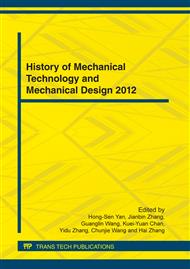p.74
p.79
p.86
p.91
p.95
p.100
p.107
p.111
p.116
Investigation of Tool Deflection of Solid Carbide End Mill in Cutting Process
Abstract:
Tool deflection is one of the important influencing factors for surface roughness and surface integrity of work piece in cutting process. The excessive deflection even causes seriously defects of work piece or failures of tool. This paper gives theory analysis and mathematic method to predict the tool deflection by means of the cantilever beam deflection theory. Based on modeling of 3-dimmsion milling force model, the finite element analysis has been performed for calculation of tool deflection. The experiment of tool deflection of solid end mill is performed to compare simulation and theory. Results show the correction and reliability of research method. It lays a foundation for fast calculation of tool deflection and optimization of milling parameters.
Info:
Periodical:
Pages:
95-99
Citation:
Online since:
April 2012
Authors:
Keywords:
Price:
Сopyright:
© 2012 Trans Tech Publications Ltd. All Rights Reserved
Share:
Citation:


